In the preparation of conservation in the winter it is important to observe the technology and capacity to prepare properly. This can be done in different ways. Many are involved with sterilizing jars in the oven at the same time allowing a large number of containers handled. As with other methods, this method has its own characteristics. We offer to meet them in more detail.
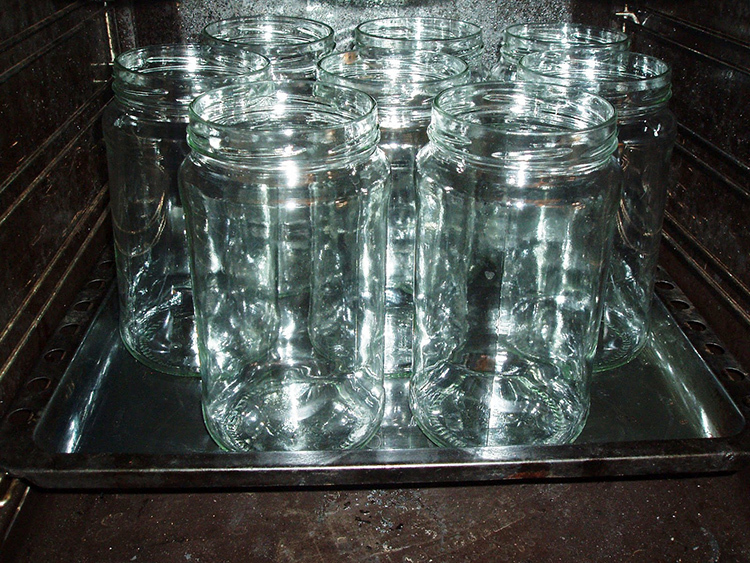
PHOTO: redler.ru
Read article
- 1 General rules for sterilizing jars in the oven
- 2 Advantages and disadvantages of the method of sterilization of cans in the oven
- 3 Advance preparation for sterilizing jars in the oven
- 3.1 Checking the tightness of the banks
- 3.2 How and what to clean the banks: tips
- 4 Sterilizing jars in an electric oven: important points
- 4.1 Sterilization of empty cans
- 4.2 Sterilizing jars with blanks
- 5 How to sterilize the banks in the gas oven: main features
- 5.1 Sterilization of empty cans
- 5.2 Sterilizing jars with blanks
- 6 Sterilization of cans in the microwave
- 7 How much should continue sterilizing jars in the oven: take into account the volume
General rules for sterilizing jars in the oven
No matter what kind of equipment you plan to use, there are a number of rules that deserve attention. Here are the main ones:
- banks should be placed only in the cold cabinet. Otherwise, they just cracked;
- installing the processed container to baking or lattice, dvorku closed;
- the maximum degree of heating should not exceed 150 - 160 ° C to avoid cracking of the glass;
- banks should not be in contact with each other during processing. They should be installed in the pan through a small distance;
- countdown begins only after the heating oven to a predetermined temperature. What - it is necessary to know in advance.
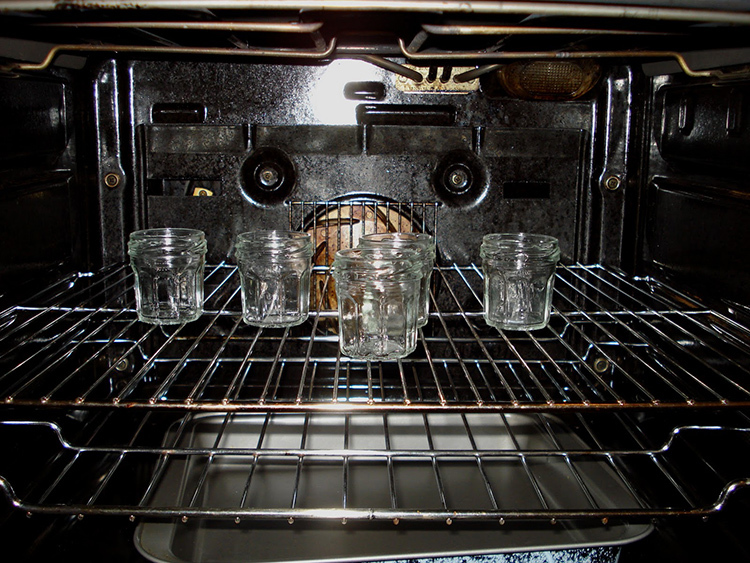
PHOTO: 4.bp.blogspot.com
Advantages and disadvantages of the method of sterilization of cans in the oven
The choice in favor of this method is often done because of the possibilities:
- simultaneous sterilization of a large number of cans both empty and with the contents. Their number is limited exclusively to the internal space of the oven;
- cooling blanks with heating equipment;
- use of treated vessels immediately after the process is complete, or after they have cooled completely.

PHOTO: zasolka.guru
Despite many obvious advantages, many prefer sterilization for a couple of:
- need careful observance of temperature mode. If the oven is old, to ensure it will be difficult;
- availability requirements for the time during which the bank can be placed inside the oven;
- the risk of cracking glass containers with simultaneous damage to the heating equipment and the appearance of fragments inside.
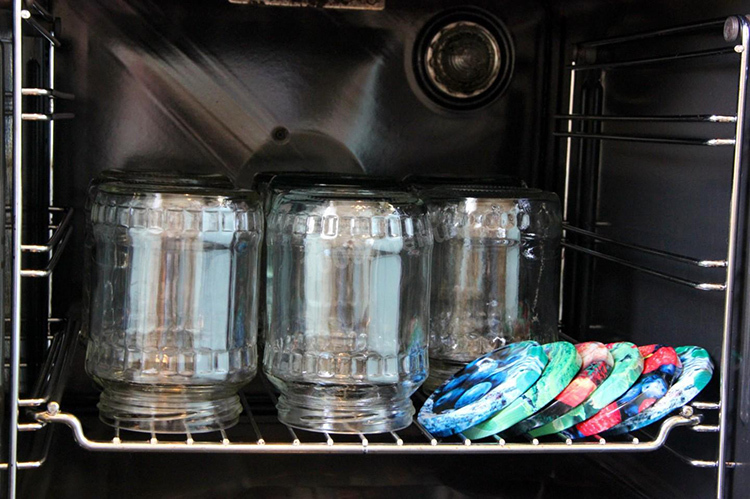
PHOTO: blog.comfy.ua
Advance preparation for sterilizing jars in the oven
Before placing the jars into the oven, they should be prepared properly. This will prevent glass cracking under high temperature or during substantial temperature fluctuations. This is done in two stages. We offer to meet with everyone.

PHOTO: stroy-market63.ru
Checking the tightness of the banks
In the first stage tank is checked for leaks. To this end, it carefully inspected to verify the absence of any damage: cracks, chips or rust.
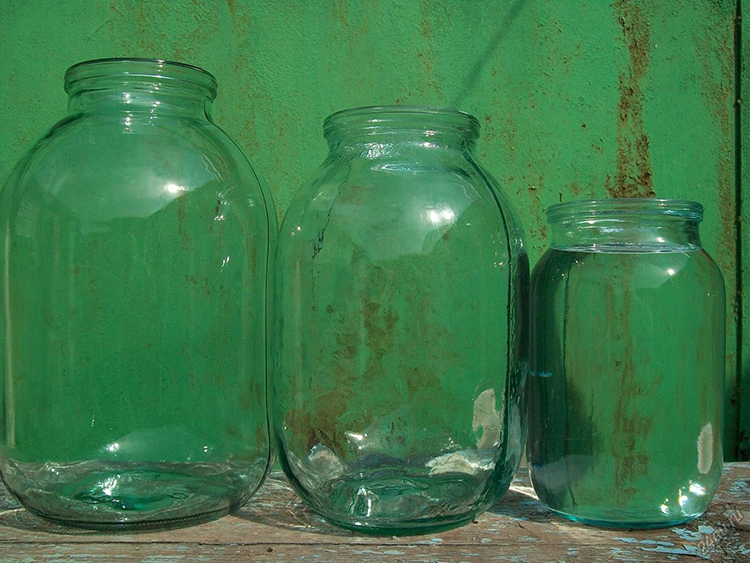
PHOTO: media2.24aul.ru
Attention! If the bank has a slight defect, it can not be used for storage of blanks.
You should also carefully examine the cover that you plan to use. They should be equal, have the correct form. Scratches and rust unacceptable.
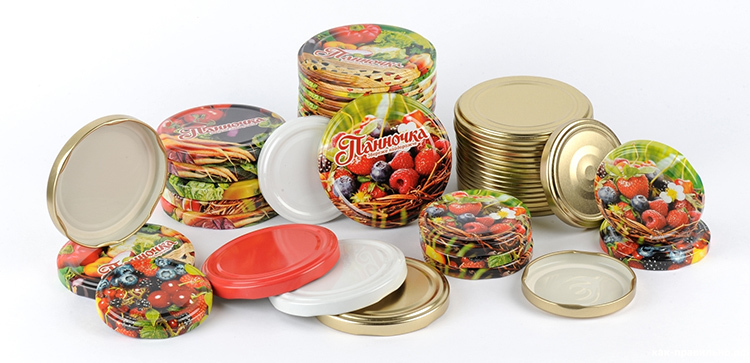
PHOTO: posuda-gid.ru
How and what to clean the banks: tips
To remove any contaminants should only use a clean sponge. The use of conventional detergents should be abandoned. Their constituent chemical additives washed sufficiently bad, and therefore may be inside the preforms.
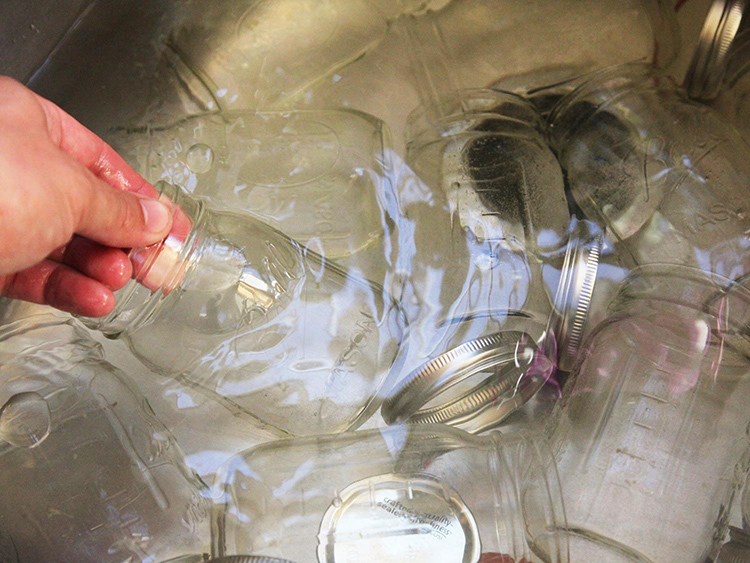
PHOTO: seriouseats.com
If there is stubborn dirt should be used:
- soda;
- laundry soap;
- mustard powder;
- natural cleanser.
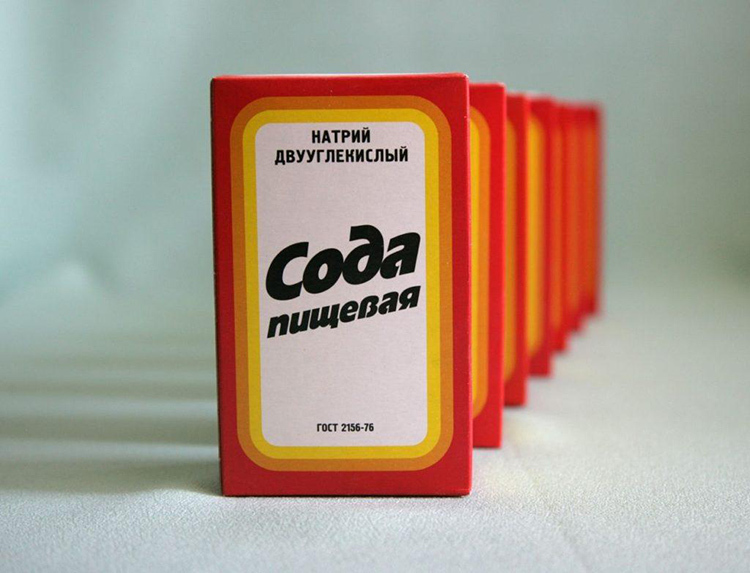
PHOTO: babushkinadacha.ru
Sterilizing jars in an electric oven: important points
electric ovens lately very popular. Especially, if the house is located away from the gas line. They can also be used to sterilize the jars. However, for this it is necessary to get acquainted with the intricacies of the process.

PHOTO: i0.wp.com
Sterilization of empty cans
Before proceeding to the processing of containers should be thoroughly washed, and clean electric oven. It will not allow the old smells permeate the banks. After that:
- Set on a baking banks. If they are dry, they are placed upside down when wet - neck up. If necessary, a number of stacked iron lid.
- Electric oven includes exposing temperature 150C.
- After reaching said temperature device is left switched on for a certain time, which depends on the volume of the processed containers.
- After a sufficient length of temperature treatment, packaging carefully removed. Mistresses do it with a dry towel or gloves to prevent cracking of the glass.
Attention! The vessel can not be taken by the neck, as it could break away.
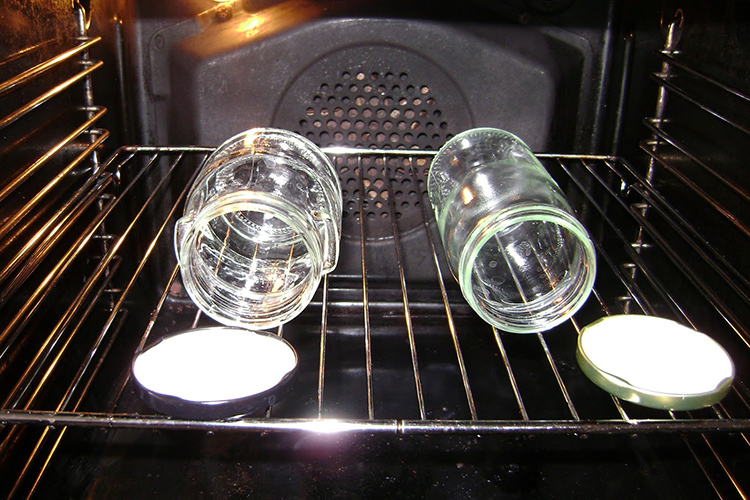
PHOTO: 4.bp.blogspot.com
Sterilizing jars with blanks
Often recipe conservation involves the sterilization of jars with blanks. This significantly improves their quality. At the same time, packaging is not only sterilized, but also dried. Due to this, it is possible to abandon the pretreatment steam cans and excessive increase the moisture level in the kitchen. This is done in the following sequence:
- jar filled with preservation and placed in a suitably sized container filled with water. The lid is removed at the same time. Everything is placed in the oven;
- temperature 150C is set, and the content is maintained a predetermined time;
- billet accrue from the oven and the lids are closed;
- container inverted and tightly wrapped with a blanket to ensure slow cooling;
- when the temperature drops, twisting can be transferred to the cellar.
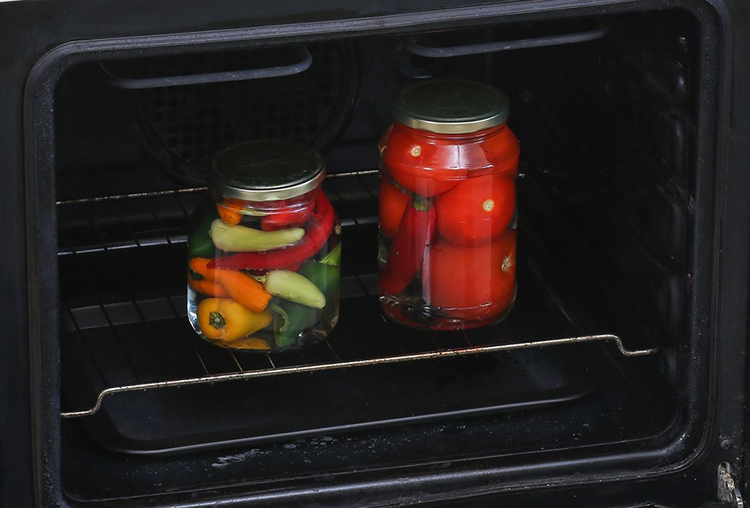
PHOTO: prostokvashino.ru
More detailed information on the technological characteristics of the process can meet, play the video below:
How to sterilize the banks in the gas oven: main features
If the house is set gas stove, It can also be used in the preservation of workpieces. We just have to figure out how to sterilize the jars in the oven. We offer to meet the basic process features.

PHOTO: shefcook.ru
Sterilization of empty cans
Before proceeding to the heat treatment, the tank carefully prepared. Then proceed directly to sterilization.
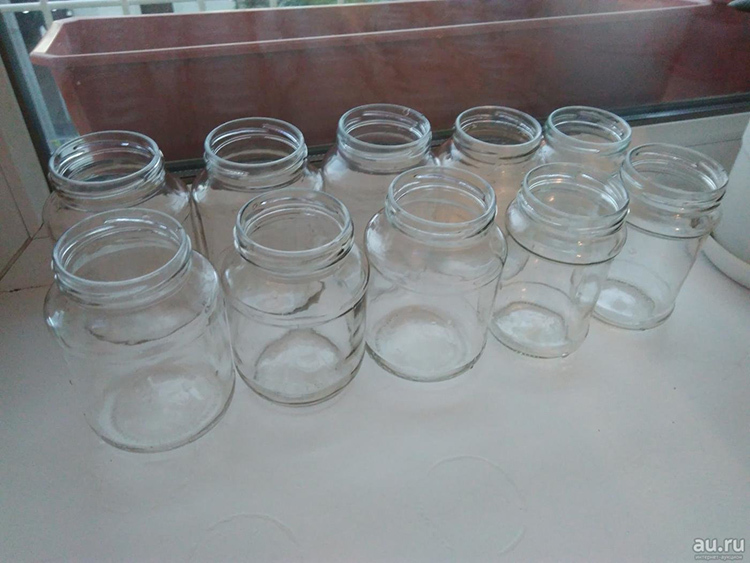
PHOTO: media2.24aul.ru
How to do it, offer to find out the following video:
Sterilizing jars with blanks
If the prescription bank sterilized together with the workpiece, first container thoroughly washed, dried and filled with conservation. Banks are set on a baking sheet at a distance from each other, hide behind cover, but not completely. When fully closed they will explode during treatment.
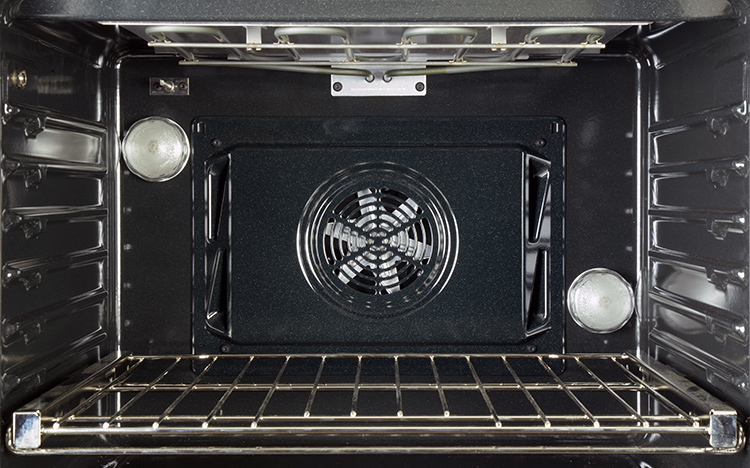
PHOTO: reviewed-production.s3.amazonaws.com
Attention! Workpiece placed inside a cold oven.
Gradually the temperature was adjusted to 100C and held for the time specified in the recipe. After the desired period, wait 5 minutes, and then slowly open the oven door and take out the workpiece.
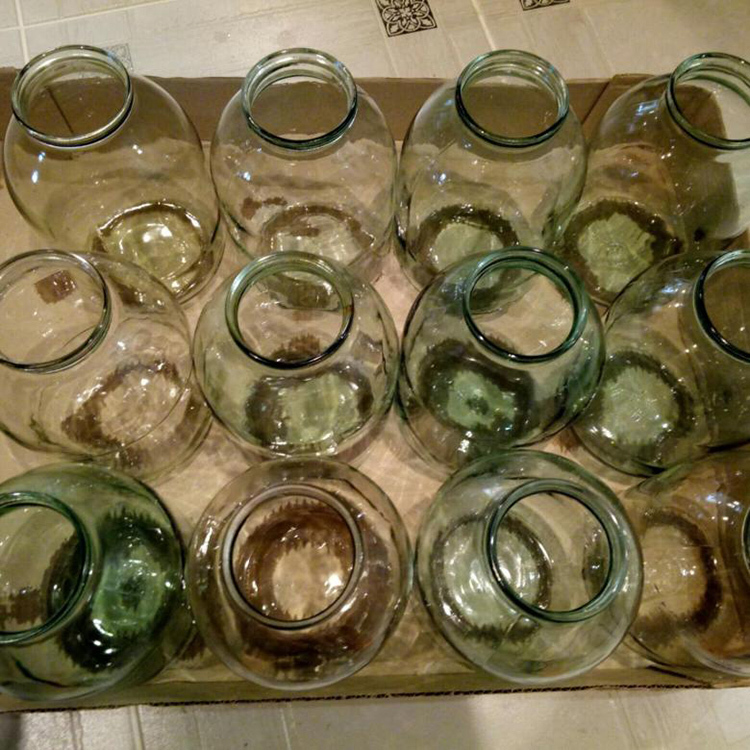
PHOTO: cache3.youla.io
Sterilization of cans in the microwave
The procedure for sterilizing jars in the microwave a little different. The thing is the property of microwaves, which are able to heat only the water molecules. Therefore, it is poured into the tank to a level of 1.5 - 2 cm with respect to the bottom. If the internal volume of the microwave oven allows treatment to produce three-liter cans, it was poured in 1 cup.
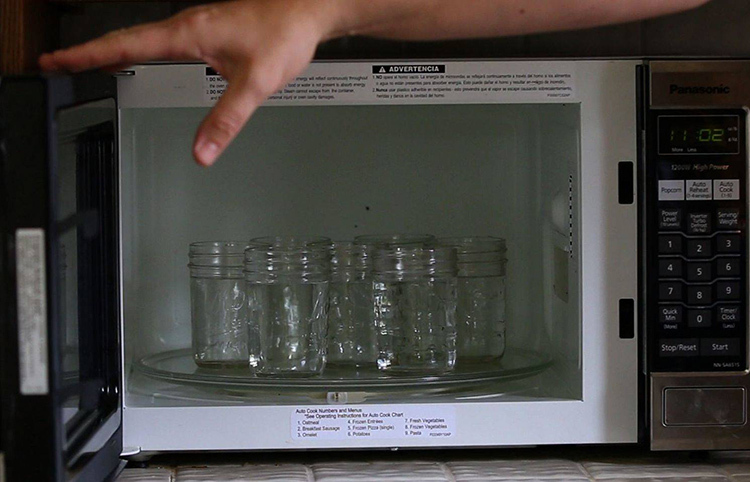
PHOTO: kto-chto-gde.ru
Microwave oven set at maximum power and wait for 3 - 5 minutes. After boiling water on the glass will be big drops. Then, the jar was removed and put on a dry towel upside down.
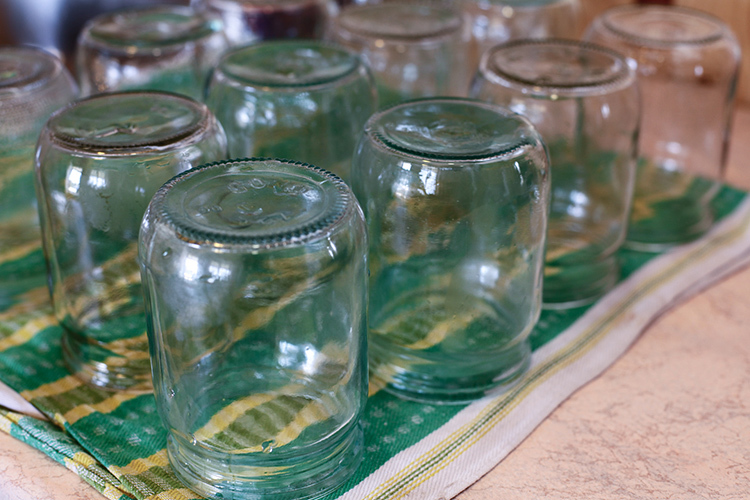
PHOTO: funpanda.ru
Attention! Microwave oven is not suitable for sterilizing metal lids.
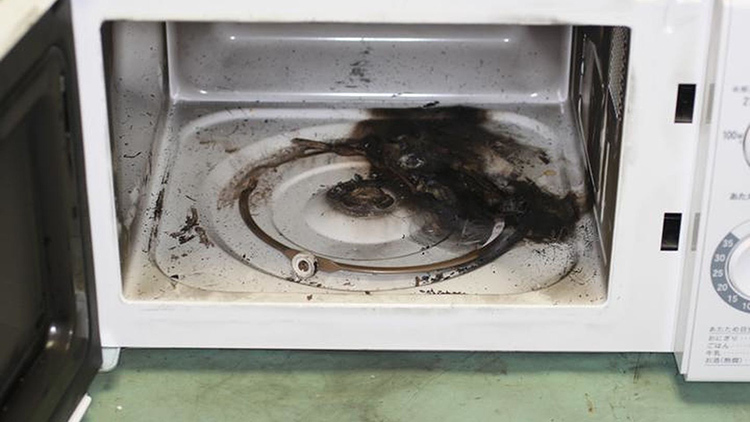
PHOTO: s1.eestatic.com
Watch the following video to learn about the intricacies of the temperature effect:
How much should continue sterilizing jars in the oven: take into account the volume
The duration of thermal exposure depends on the volume of the container. To billet stood all winter, it is necessary to sterilize the jars on:
- 0,5 - 0,75 - 10 minutes;
- 1 L - 15 minutes;
- 2 L - 20 minutes;
- 3 liters - half an hour.

PHOTO: static.1000.menu
Share in the comments, if you ever sterilized jars in the oven? How satisfied with the result?

